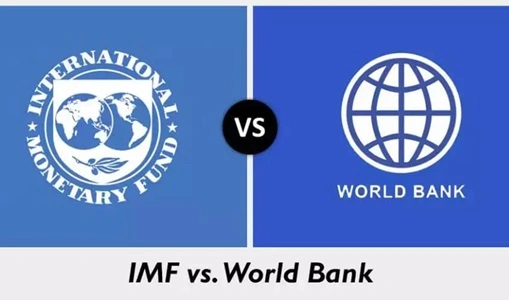Well, oftentimes, people think that a Bank Guarantee and a Letter of Credit are the same thing, but that’s not how it is. Sure, from the looks of it or on the surface level, you may find some similarities, but still, these are just two different things. Though, both are used when a business deal is happening, but one party just doesn’t pay or do what they have promised, and that is precisely where a financial institution comes into play with either a Bank Guarantee or a Letter of Credit to settle the matter. And if you’re someone who just wants to be a whole lot clearer about these two terms, like what they are, when they are used, why they are used, what happens when these things are in action, and stuff like that, then just keep on reading. Why? Well, that’s just because we’re about to give you a lowdown on Bank Guarantee Vs Letter of Credit, you know, just listing down all the major differences. So, here we go then.
What Exactly Is a Bank Guarantee?

Let’s first talk about the bank guarantee that is super common these days. So, what is it exactly? Well, in the simplest words possible, it is exactly as it sounds, which means it is a guarantee given to you by the bank itself that when the other party in the deal doesn’t deliver on what they initially promised, then you can dispute it and the bank will have to step in to solve the matter. By solving the matter, we mean that the bank will pay the other party. We said it is a common thing because it really is common in real estate, infrastructure projects, or big contracts.
To put it in a real life example, take it like this: Let’s say there is a bridge/road building project, but for some reason, if they don’t finish the job, the bank pays the client instead.
Types of Bank Guarantees
Sure enough, there are different types of bank guarantees out there based on the type of situation there is. Here:
- Performance Guarantee: This one comes into action if work isn’t done properly.
- Advance Payment Guarantee: Like, what if you paid upfront and didn’t get the goods/services? Well, then this particular bank guarantee is put in action by the bank, and they pay you back.
- Warranty Guarantee: Well, this one is there to ensure any defects or problems get covered.
- Rental Guarantee: The name pretty much gives it away, yes, it helps you rent property when the owner needs a money backup.
- Loan Guarantee: The Bank promises to repay your loan if you can’t, which isn’t super common.
What’s This Letter of Credit Thing Then?
Unlike the bank guarantee, this Letter of Credit thing is mostly used or useful in international trades. How? Well, as you may already know, in most international trade, it is possible that the buyers and sellers don’t even know each other, right? So, for such trades, the bank often works like a middleman, you know, holding the money and releasing it only when the seller does their part. Plain and simple!
Popular Types of Letters of Credit:
Once again, just like the bank guarantee, a Letter of Credit also has different types based on what scenario it is. Like:
- Commercial LC: The bank pays directly when conditions are met, it’s as simple as that!
- Revolving LC: This one is for multiple shipments over time.
- Standby LC: Like insurance, it only comes into action if something goes wrong, not before that.
- Confirmed LC: Another bank backs up the first bank (great for risky countries).
- Traveler’s LC: This one is mainly for globetrotters; you know, they can get cash abroad with this one.
Key Differences Between Bank Guarantee And Letter of Credit
- Purpose: In the case of a bank guarantee, well, that’s just to protect one party where the other one fails to deliver. LC is for those looking for a guaranteed payment once the seller has shipped the product but the buyer didn’t pay up.
- Primary vs Secondary Obligation: With a bank guarantee, the buyer (or contractor) is responsible first. The bank, in this case, works like a backup; that’s all. In the case of LC, it is the bank that takes primary obligation to pay the seller.
- Usage: It could very well be that a bank guarantee is applied within the same country for different deals in real estate, infrastructure projects, construction contracts, and rentals. But when we talk about LC, it is mainly for international trades, and within that segment, it is for import/export businesses and global supply chain transactions.
- Risk Protection: A Bank guarantee is actually all about covering or backing up the performance risk, you know, where one party didn’t do what they promised or didn’t deliver a service. On the other hand, a Letter of Credit is more about covering payment risks, like making sure that the seller gets paid if they have shipped a product to another country already.
- Who Gets It Issued: Well, a bank guarantee is more about having some credibility and that’s why it is the contractors, tenants, or suppliers who issue this. Quite the opposite of it, in the case of a Letter of Credit, it is actually issued by the buyers or the importers because they want to show that they’re interested in the product and are ready to pay as well.
- Cost: Sure enough, these aren’t free services by the banks, there certainly are costs associated. Like, a bank guarantee typically costs 0.5% to 1.5% of the guaranteed amount per year. Letter of Credit? Well, that’s around the same range as well, like 0.75% to 1.5%, depending on the type and risk involved.
Conclusion
As you just saw, these two terms may sound or appear way too similar, but when you get down to details, you really see the differences. We truly hope that today we helped you clear up all your doubts regarding what a bank guarantee is and what a letter of credit is. Alright then, we’ll see you in the next one.

